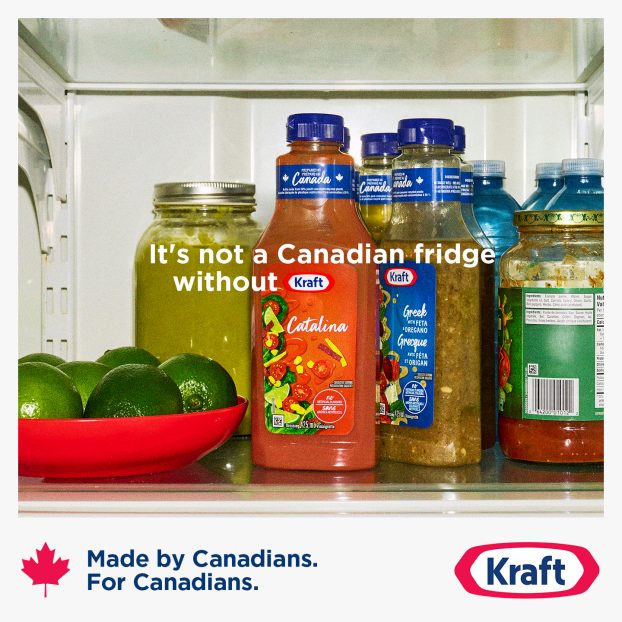What do you do when a shark attacks? How do you escape from quicksand? These days, it seems like you can get all the answers you need by picking up one of those handy yellow survival guides that are all the rage.
But so far, no one’s published a how-to guide for surviving the transition to the new nutritional labelling format that will become law early this summer. And if companies don’t start developing an action plan soon, they may find themselves drowning in a different kind of quicksand.
By now, just about everyone is aware of Health Canada’s plans to some degree. For example, we all know that labelling will now be mandatory, that the new charts will mirror those used in the U.S., and that most companies will have two years to make sure all their packages comply (smaller companies will be entitled to an extra year). So, really, what’s the rush? Two years is long enough, right?
Wrong. The reality is, companies can have anywhere from 20 to a few thousand SKUs to redesign. If it takes at least three months – and sometimes it can take as many as eight – to redesign each individual SKU, well, do the math. Time is, indeed, running out.
But there are steps you can take now that will help streamline your process and ease the transition. Here are eight important considerations that we advise our clients to make when creating their nutritional labelling action plan:
1) First, set your priorities. Determine which SKUs need immediate attention versus those that can wait. Make a schedule, and assign a special task force to manage your transition process. Chris Styan, director of marketing at Kitchener, Ont.-based M&M Meat Shops, says his company has had a team working on the transition ever since the government first announced its plans in June 2001.
2) Talk to all your suppliers – design, prepress, printers, etc. – about how they plan to handle your workflow. Remember, they’re going to be busy too. Rob Durst, VP of sales at film separation printer Schawk Toronto says they’ve already completed a manpower analysis to ensure they’re ready for the increased volume. He recommends finding ‘a partner who has all the required resources in-house – having to go outside for certain services will ultimately increase cycle times and make quality control more challenging.’
3) Identify which SKUs perform well and which are under-achievers. If a product has had a consistently poor showing, consider cancelling it to fund the changes, rather than incurring the extra cost to redesign its packaging.
4) Look for other areas to cut costs. Could the package be printed more cost-effectively? Could a five-colour job be converted to three? Reprinting all your SKUs could be very expensive, so the more money you save now, the better.
5) Co-ordinate with your R&D department to ensure that you have all the necessary data. For example, up until now, companies were not required to declare a sodium value unless they made a low-sodium claim. But according to the new regulations, a sodium declaration is mandatory, claim or no claim. You may need to have your product re-analyzed to get this missing data, and that could take some time.
6) Think about how often you reformulate your product. If this happens on a fairly regular basis, you should consider a redesign that will accommodate quick and simple changes later on.
7) Evaluate all brand communication on each package for its strengths and weaknesses. The new chart will take up a significant amount of space, so you’ll need to determine what’s essential and what can be sacrificed. Be very careful: the requirements set out in the Consumer Packaging and Labelling Act, including those concerning minimum type size, are still in force. And, as April Burke, VP of manufacturing at Mississauga, Ont.-based McLaren Morris and Todd, warns, crowding the information could compromise the printability of your package.
8) Finally, do some damage control. Assess the impact of the new look of your packaging on your consumer. How will this affect your marketing strategy? What steps can you take now to ensure that the new layout and information do not alienate your customer?
Remember, also, that the process has many advantages. As Styan notes, these new labels will ultimately serve to ‘level the playing field.’ Not only will consumers benefit from the more consistent and easier-to-read format, but they’ll also be able to make more informed choices, because companies will now have to disclose more detailed information about their products.
At the very least, it’s a perfect opportunity to take stock of your entire brand and how it’s communicated. This is your chance to weed out any ineffective elements and re-energize your brand’s performance. It’s also a way to determine where and when you can cut unnecessary costs.
Whether you’ve got 20 SKUs or a thousand, the message is the same: start planning. Get all the help you can. Your design consultancy should be able to get you on the right track, and if they can’t, look for someone who can.
Because if you want to escape this quicksand, you’ve got to move fast.
Anne Marie Pagliacci is the president of Anthem Group Toronto, a global resource of Schawk Inc. Anthem Group is a consumer and corporate branding design and communications firm with offices in Toronto, New Jersey, Chicago, Minneapolis and Los Angeles.























